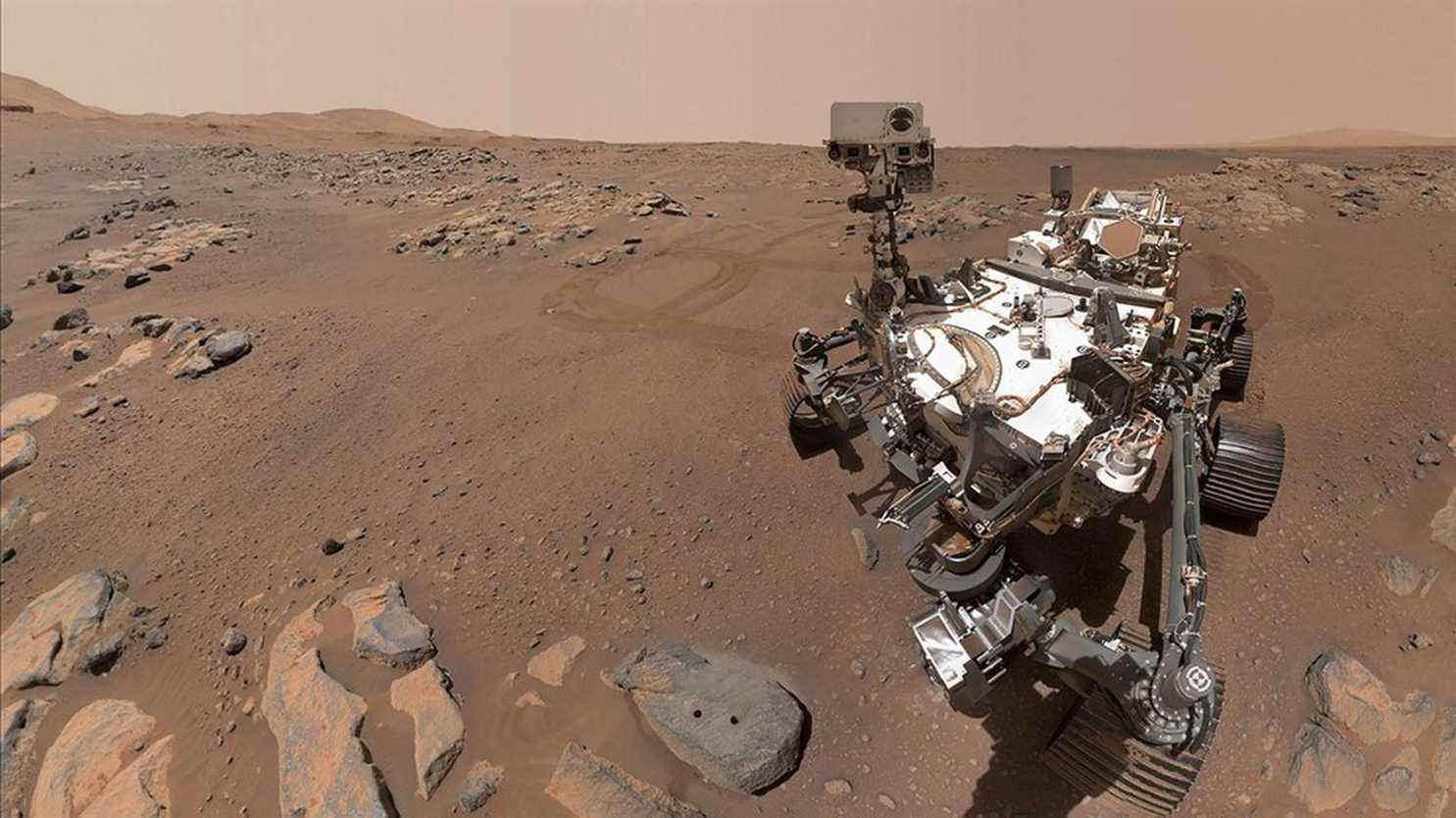It is at the speed of a galloping snail that the Perseverance rover has been crisscrossing Mars for twelve months the vast crater called Jezero in which it landed: at the rate of 50 meters per hour, it already has four kilometers on the clock. .
>> Relive the landing of the Perseverance robot on the red planet
“Perseverance is doing very wellrejoices Sylvestre Maurice, astrophysicist at the Institute for Research in Astrophysics and Planetology (Irap) in Toulouse. We took a few months to get the vehicle under control. It’s not easy though. It’s a very complex vehicle to handle all the instruments, including Super Cam, and to our delight, because we had been working for years, it works very well. We make laser shots, images, recordings. There is science under construction.”
With, also, several successful technological firsts such as the flight of the Ingenuity drone last spring. “Ingenuity was really just techno, but it helped us, emphasizes Sylvestre Maurice. It was supposed to make five flights and since then it still works: we continued and today it is on its 19th flight, that is to say that it has flown more than 30 minutes since the start, that is four kilometers, practically as much as the rover itself.“
“Ingenuity goes places we can’t go, it scouts for us, it precedes us and that’s amazing.”
Sylvester Mauriceat franceinfo
Ingenuity is the pilot fish of the rover but also the support for other new experiences, such as the direct capture of sounds on Mars. To the delight of Baptiste Chide, who worked during his thesis on the installation of this first microphone on board and who continues his research today from the American control center of Perseverance, in the United States.
“On Mars, the sounds are hugely attenuated compared to Earth. All our models were telling us that we had no chance of hearing Ingenuity, indicates the latter. And even if it means having a microphone on Mars associated with a helicopter, you might as well turn on the microphone to see what happens: we were surprised to hear this helicopter which was more than 100 meters from us. And we even heard it very well! It was our big surprise.”
“Scientifically, these are results that are super important, continues Baptiste Chide. This tells us how sound travels on Mars. And then, it reveals things to us that we weren’t aware of: the turbulence on the surface of Mars with these air movements, these plumes of hot air which come off the surface as convection during the day, can propagate sounds much further than we thought. It is thanks to this that we were able to hear Ingenuity for example.”
How is the Perseverance robot doing after a year of mission on Mars? The answer of Sylvestre Maurice, co-responsible for the SuperCam instrument at Perseverance, that is to say the head of the rover. pic.twitter.com/EAWzNvIGkg
— franceinfo (@franceinfo) February 18, 2022
On the ground, Perseverance has also focused on its core mission: taking, thanks in particular to its laser camera designed by Sylvestre Maurice and his teams, rock samples that it stores in its belly while waiting to be able to send them back to Earth. , in 2031.
“We are going to give ourselves six years to collect about forty of them, these few grams each time. And then, we will put them in a corner. Then we will have finished our mission!
Sylvester Mauriceat franceinfo
“Within six years, explains Sylvestre Maurice, NASA, the European Space Agency ESA with Cnes, will go to Mars, land next to us, collect small samples, put them on a rocket (…) and bring them back to Earth in 2031. The Grail planetary scientists is to bring samples back to Earth.” They have already collected seven of them: these little pieces of Mars will perhaps bring a lot of information. “They will tell us if, in the past, 3.5 billion years ago or a little more, there were Martians, there was life”, he explains. “We are living in an absolutely incredible Martian era and we are enjoying it!”enthuses, dreamer, theastrophysicist.
